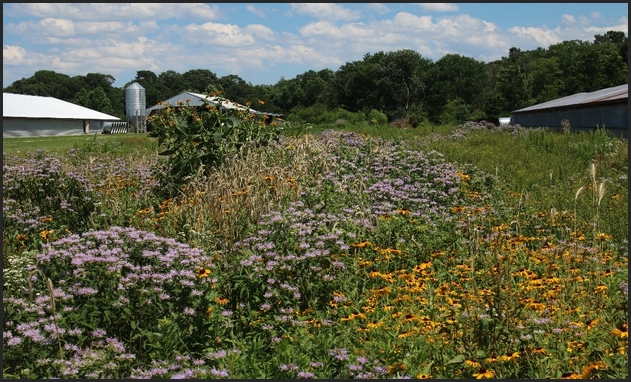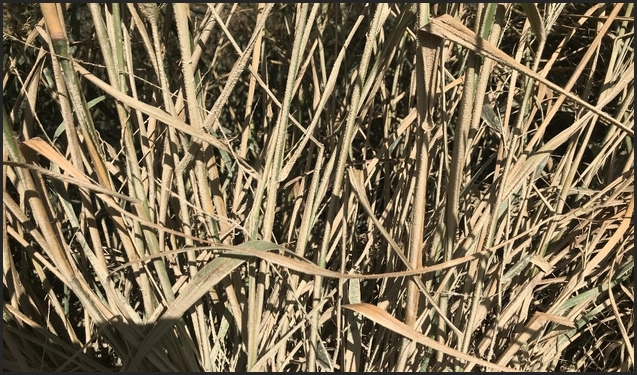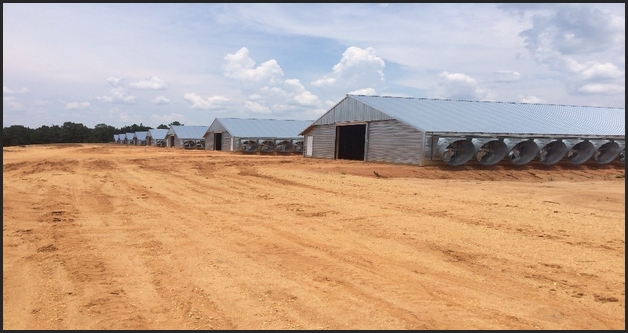Land development throughout the country is increasingly bringing residential development and non-farmers into rural agricultural areas. Many of these new residents to the countryside have no previous exposure to agriculture or farming. As a result, they often have misconceptions about what activities occur in farming operations. This influx of new (and perhaps misinformed or uneducated to agricultural practices) nonfarm neighbors has important implications for how poultry farms may operate in the future.
Today, the demographics of rural areas are changing rapidly and becoming more urbanized. In addition, public awareness of the environment and pollution has heightened as the geographic consolidation of agricultural industries creates a concentration of agricultural wastes, and urban growth continues to spill over into the nation’s farmland (Ritz, 2010).
Furthermore, few people outside the agricultural community understand the commercial farming practices employed by the poultry industry. Several states have right-to-farm laws in place today. Many of these states now require that home purchasers sign a contract acknowledging they are purchasing in an agricultural area.
Communication/Upkeep/General Appearance
Non-farm neighbors may complain about the noise, dust, or odors and the strange hours farmers must keep, or about agricultural practices such as mortality composting or spreading poultry litter simply because they do not understand why these activities are necessary. In addition, there is increasing concern over sustainability and the environmental footprint of agricultural practices and how these practices are affecting water quality, ecosystem degradation, and climate change.
Many people who leave the city hoping to find their idea of the “country lifestyle” are unaware of common, everyday farming practices today and have little patience for them (Tabler et al., 2018). As a result, conflicts may arise between poultry growers and their nonfarming neighbors. Neighbors may think the farm next door is destroying the “pastoral” lifestyle they moved to the country for. Farmers may conclude that their new neighbors have a serious lack of knowledge as to where their food comes from and what it takes to put supper on the table these days. Left unchecked, these differences may eventually lead to legal action where, as is always the case, nobody wins in a fight. Time and money are wasted, stress takes a mental and physical toll on all the parties involved, and relationships are destroyed. In some situations, farmers may find it difficult to expand or even continue in operation (Cunningham, 2012).
There are a few simple ways to prevent the situation from getting out of hand, however. Open communication and goodwill are important keys to avoiding conflicts. If you are a poultry grower, it’s important to know who your neighbors are and make it a point to visit with them on occasion, keeping in mind adequate biosecurity practices. By visiting your neighbors and keeping communication lines open, it’s more likely they will come to you if an issue arises instead of turning you in over a complaint they may have. Recognize the fact that operating a poultry farm comes with a number of challenges in addition to day-to-day farm management requirements. Often, people “smell” with their eyes instead of their noses. Running a clean, neat, well-managed farm is one of the best ways to lessen complaints about animal production facilities.
In most cases, people will be more tolerant of dust and odor from a well-managed operation than from an untidy one. Of course, extra effort is required to keep the grass mowed on a regular basis and maintain a well-groomed operation, but it will likely be worth it from a public relations standpoint. Visit with neighbors when you have something upcoming that may affect them such as spreading litter, or a nighttime catch with live haul trucks coming and going all night. They need to personally hear from you accurate information about what’s going on instead of getting secondhand information that may or may not be correct or, worse yet, being surprised by your actions with no warning at all.
Neighbors may also be your customers because they likely go to the store and buy the very product you are producing. Farming is a business, and every business needs happy customers. A few common-sense practices may help keep your customers happy. If neighbors are also gardeners, a little free chicken litter for their garden is often a welcome gesture. It may seem like a small token, but it goes a long way in terms of promoting goodwill and friendship. Smoothing a neighbor’s driveway with your tractor and blade or front-end loader takes little time but will be much appreciated. If a neighbor does have a complaint, be sympathetic and address it quickly and tactfully. Hopefully, this will defuse the situation and perhaps prevent possible legal action.
Vegetative Buffers

In some situations, out of sight is out of mind. It may be worth considering screening an operation from public view. Vegetative environmental buffers or windbreaks are an old technology that hold benefits for today’s tunnel-ventilated poultry houses (Tabler and Liang, 2008). Solid-wall poultry house construction now makes it feasible to have trees alongside poultry houses without worrying about disrupting airflow patterns. Minimizing visibility will draw attention away from the farm as a potential source of dust, flies, odors, or other possible nuisances. Buffers can also be used to block lights from feed-haul and live-haul trucks shinning into neighbors’ homes/property.
Vegetative buffers are often composed of a combination of grasses, trees, and shrubs and can be planted around the production area to help capture dust as well as beautify the farm (Moyle, 2021). Additionally, planting tall warm season grasses in front of fans (at least two times the fan width away) can help fans operate more efficiently by reducing back pressure, while helping to reduce noise, in addition to capturing dust and other nutrients. Buffers can also help capture any nutrients that may be lost from the production area and help keep them out of local waterways. Finally, buffers can provide an attractive environment for native pollinators, especially when flowering plants are used as part of the buffer (Moyle, 2021).

Spreading Litter
Spreading litter is always a delicate issue because it generates both dust and odor for a while. Think before you spread, and when and where you spread. Check the wind direction and speed. Is there rain in the forecast for the immediate future? Spread during the hot part of the day (when most people are not at home) so that the sun can help further dry the material and reduce odor. Do not spread very early in the morning or late evening when humidity is high and the air is heavy. These conditions hold odor near the ground and increases the likelihood that someone will be affected and complain. Give yourself enough distance when spreading that you do not sling chunks of caked litter across roads or highways or onto neighbors’ yards or property.
Notifying neighbors close to the field about when you are planning on spreading manure can help avoid problems. Be flexible, if they have a party or outdoor event planned, try and postpone spreading if possible. Incorporating the litter quickly into the soil (disk, turbo-till, etc.) will increase the effectiveness of the litter and lessen odor. In Maryland for example, regulations require litter to be incorporated within 24 hours.
Mortality Disposal
Mortality disposal is another area with a high potential to generate numerous complaints. Properly dispose of mortality immediately after removal from the chicken house. Do not throw dead birds outside the chicken house door for the neighbor’s dogs to drag away. If you have an incinerator, use a fast, hot burn to dispose of mortality quickly. A slow burn allows the mortality to smolder which will generate an odor likely to draw complaints. Use the afterburner (which re-burns the smoke) if your incinerator has one. This will remove many of the particles in the smoke that actually generate the odor. Burn the mortality during the day if possible; not early morning or evening when the air is heavy and the odor stays close to the ground. If you have a composter, cover mortality with sufficient litter to prevent vectors (opossums, raccoons, skunks, dogs, vultures, coyotes, etc.) from uncovering and dragging away carcasses. Also, use a probe thermometer to check the temperature on a regular basis. Temperature should be in the 130° F range as the bin is filling and may reach 140-150° F after the bin is filled. If in a static bin that requires turning, once the temperature has peaked and fallen back to the 120° F range (this usually takes 2-3 weeks), the material is ready to turn for further decomposition.
Education
Education is a key point for both the farm and nonfarm populations. Farmers are busy with their work and often fail to realize that a large part of the population is so far removed from agriculture today that they do not understand what it takes to put food on the table. Because they do not understand the demands of farming, the nonfarm population is often intolerant and unwilling to accept the occasional noise, odor, dust, etc. that farming practices generate. There are steps that the agricultural community can take to better educate the public about farming and the needs of farmers.
Local agricultural organizations can become involved with educational efforts and outreach programs for non-farmers. Farmers can also help tell their own stories through social media and other outlets. Many communities have agricultural committees associated with the local Chamber of Commerce. Volunteer for these or other agricultural promotion events at the local level. Many banks in rural areas have agricultural advisory boards that offer another opportunity to improve farm-nonfarm relationships. While these commitments take time away from the farm, the payback can be a public that is better informed, more understanding, and therefore, perhaps more willing to accept the occasional nuisances associated with agricultural production.
Summary
With regard to neighbor relations, communication skills, and conflict resolution talents may be just as important as minimizing odors, dust, noise, and pests through improved management practices. Developing and improving neighbor relations can be one of the most important activities that help farming operations adjust and survive changes occurring in rural landscapes today. By educating neighbors about the practices and activities associated with modern livestock production, farmers may be better able to maintain responsible farming practices in the future and avert needless conflicts and hard feelings by helping their neighbors understand the reasons behind what they do.
References
Cunningham, D. L. 2012. Nuisance myths and poultry farming. Univ. of Georgia Cooperative Extension. Bulletin 1299. Athens, GA.
Moyle., J. 2021. Good neighbor relations. University of Maryland Extension. Available at: https://extension.umd.edu/resource/good-neighbor-relations. Accessed: 25 June 2021.
Ritz, C. W. 2010. Coexisting with neighbors: A poultry farmer’s guide. Univ. of Georgia Cooperative Extension. Bulletin 1263. Athens, GA.
Tabler, G. T., and Y. Liang. 2008. Poultry litter: Issues and opportunities. Avian Advice 10(3):1-3. Univ. of Arkansas Division of Agriculture, Cooperative Extension Service. Fayetteville, AR
Tabler, T, J. Wells, and W. Zhai. 2018. Poultry farming and neighbors: The little things are important. Mississippi State University Extension Service Information Sheet No. 1953. October.
